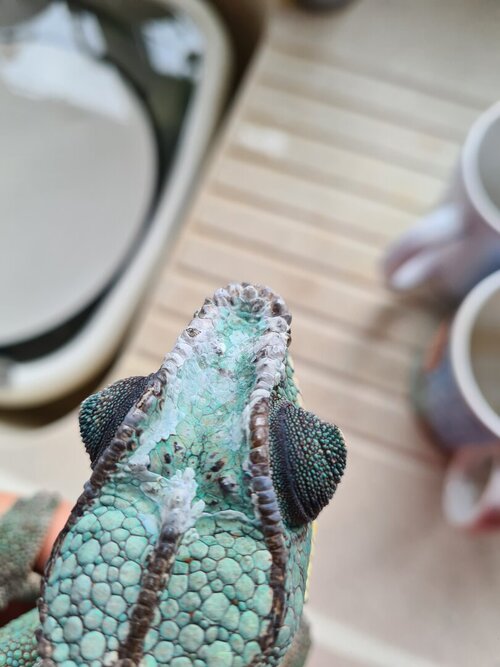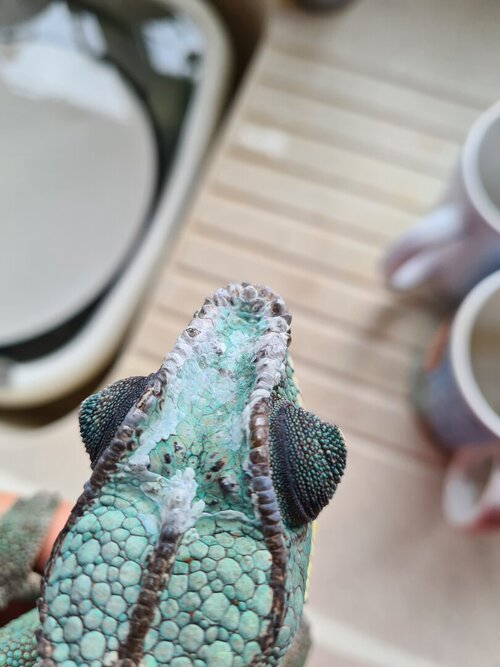NeonDetonation
Member
For the past few months I have had 2 panther chameleons one is a 3 year old called morph and is a masoala the both of them don't eat much but he has been shedding his whole head since I got him, the only thing I am worried about is that when looking at it today it seemed as if he was shedding again on the next layer down under where he just shed. I don't know why or even if this is normal, I am worried because of his age that he may pass sooner than I think I will post before photos of before I got him and now photos, surprisingly both like to be handles and like climbing and seeing my house both scratch on the glass on there vivariums to come out and climb around then just rest atop my head before eventually having enough and heading down my arm back towards where there vivariums are.
Now for all the information, they eat 4-6 adult locust per day sometimes less, a lot less, morph has a constant dripper and a fogger which turns on 2 times a day morph is in a 86cm by 94cm by 49cm vivarium with, hiding spots, tons of climbing stuff and even flowers, he is very content but the shedding has me worried its just on his head and I don't want him to be hurt.
The fist one with the mesh screen is before I got him
Then all the others are how he is now.





Now for all the information, they eat 4-6 adult locust per day sometimes less, a lot less, morph has a constant dripper and a fogger which turns on 2 times a day morph is in a 86cm by 94cm by 49cm vivarium with, hiding spots, tons of climbing stuff and even flowers, he is very content but the shedding has me worried its just on his head and I don't want him to be hurt.
The fist one with the mesh screen is before I got him
Then all the others are how he is now.










